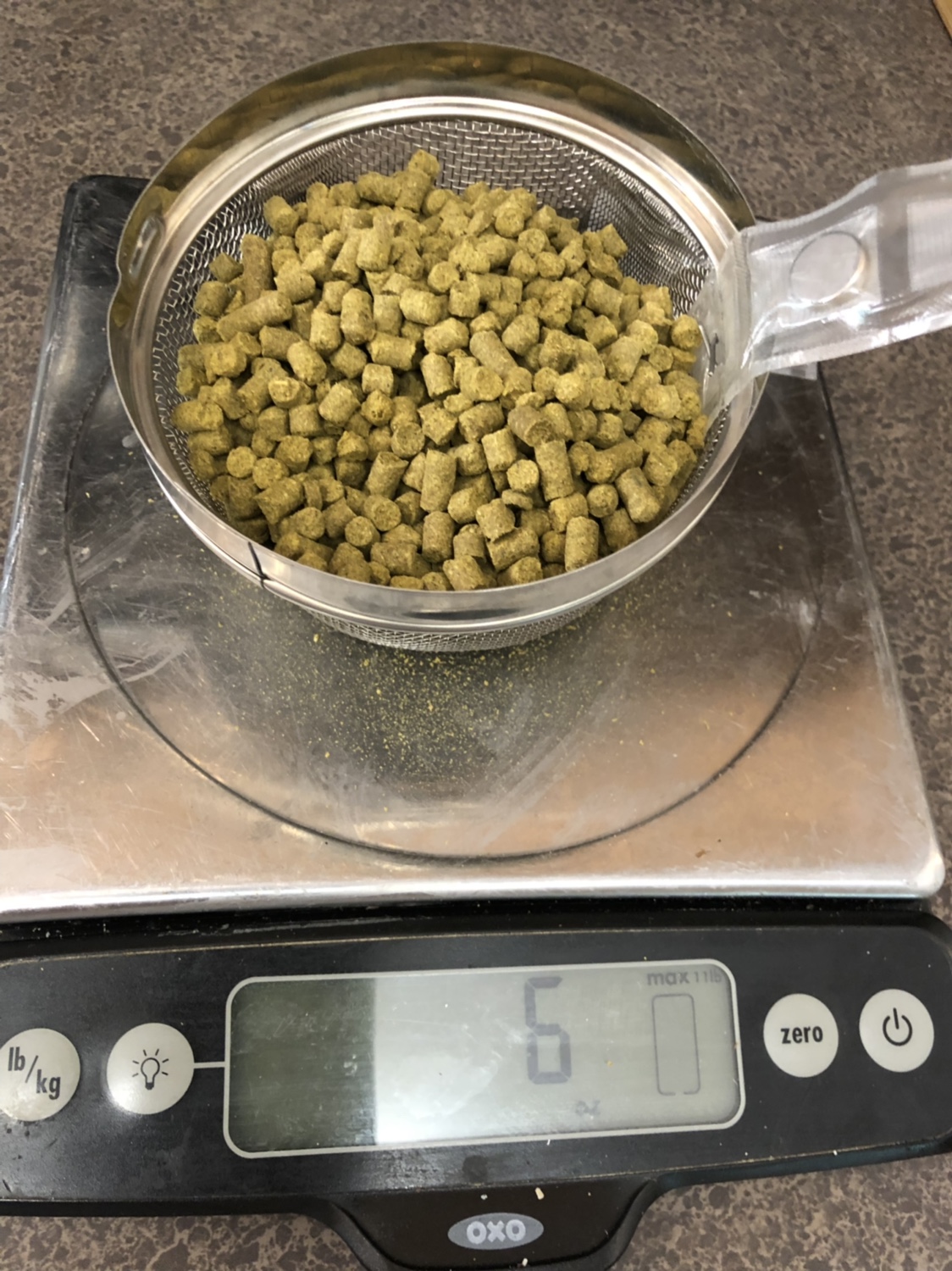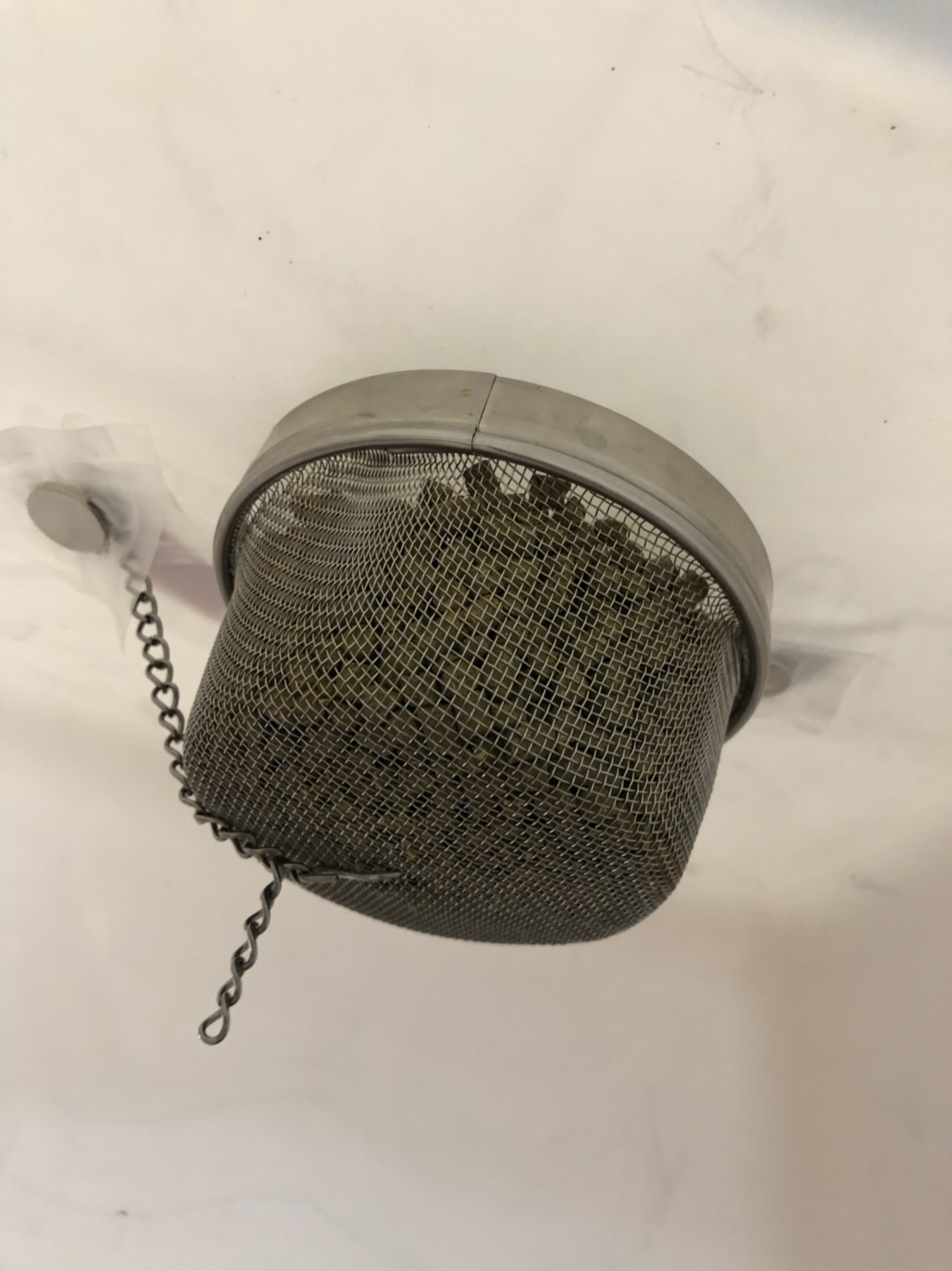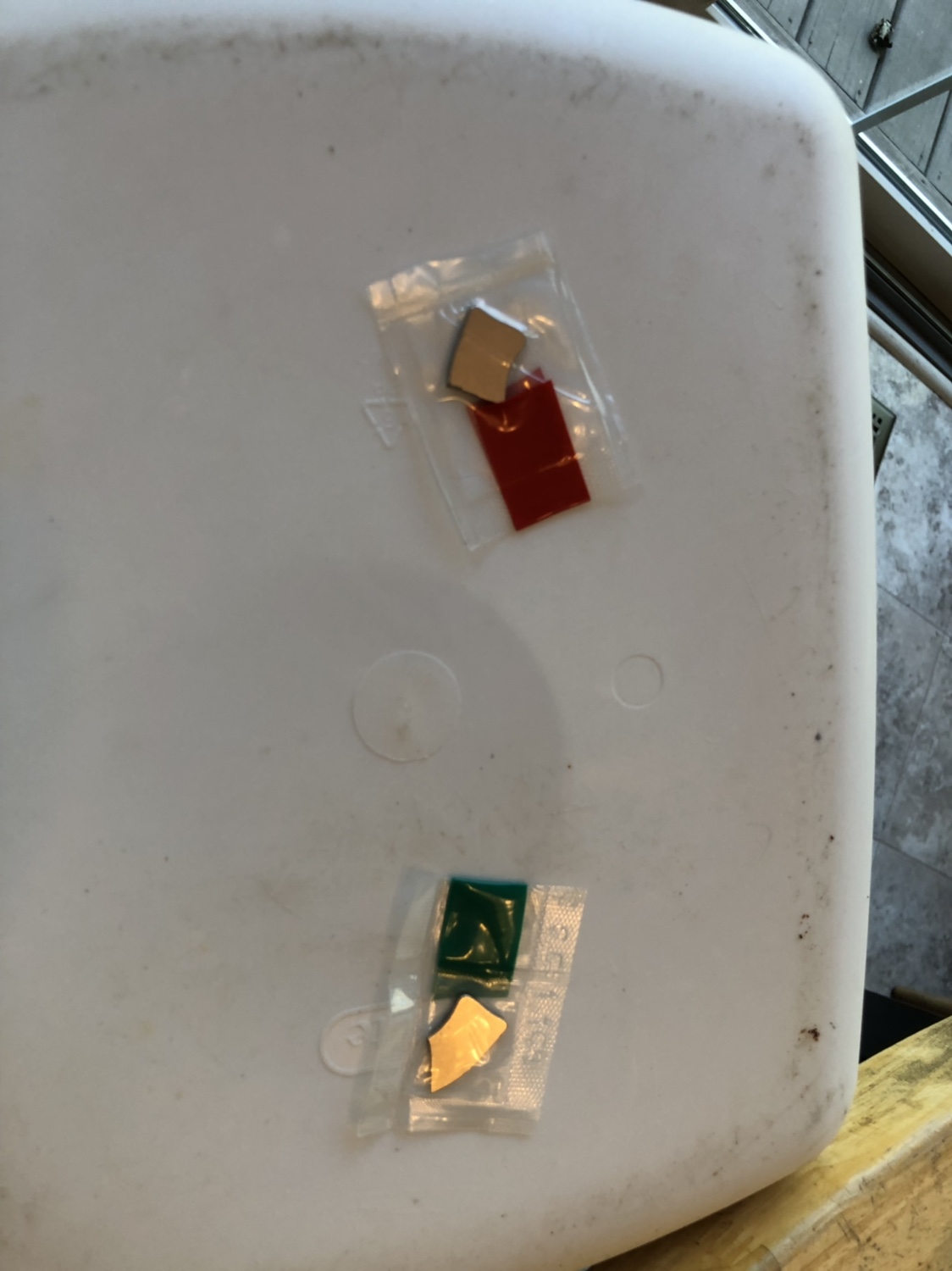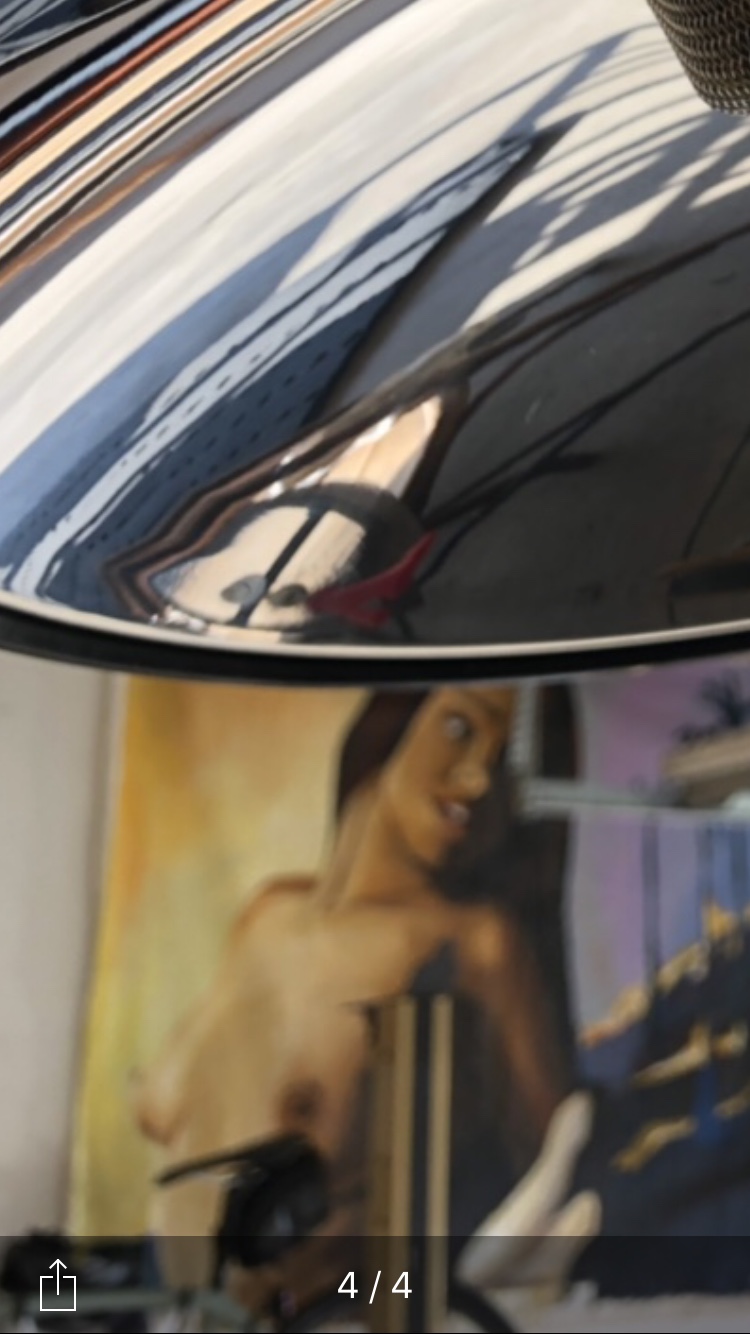Which O2 would that be? Pellets are extruded at very high pressure, so high that they even warm up significantly in the process and care must be taken so that they don't get too warm. One of the advantages of pelletized hops is exactly their lack of entrapped air which makes them very stable vis-a-vis storage. That is not even taking into the account the fact that they are usually shipped in vacuum bags (the keyword here being vacuum, as in lack of air) and we're also devising ways to purge our dry hop chambers with the pellets inside which means that it would be impossible for the pellets to retain air, if they had any, in the process.So are you grinding up all your pellets? What about all the O2 entrapped in the pellets? Oh no what’s that doing to your beer?
You are using an out of date browser. It may not display this or other websites correctly.
You should upgrade or use an alternative browser.
You should upgrade or use an alternative browser.
No oxygen dry hopping
- Thread starter SEndorf
- Start date

Help Support Homebrew Talk:
This site may earn a commission from merchant affiliate
links, including eBay, Amazon, and others.
So are you grinding up all your pellets? What about all the O2 entrapped in the pellets? Oh no what’s that doing to your beer?
It won't be doing anything to my beer, because I'll be pulling vacuum and pressurizing with CO2 repeatedly with the hops in the chamber. That's one of the main points of the chamber. Any O2 in the pellets will be long gone.
Interesting..... I was under the impression the lid with the 1.5” and 4” TC port were added and manufactured in China before delivery to Spike. Could it be that they do not have the tools or mold or whatever is required to install anything in the lid? With the lid’s shape and thickness I would think that would require a different process. Perhaps there is a cost factor to change things or to add this to their current process.
Were they more specific as to what they meant how it would affect the integrity of the lid? At least one competitor has multiple TC ports on their lid. So, it is possible.
Not specific. It was just basically a "no." Maybe it's that it wasn't installed at the factory and they didn't have the jigs to do it. Not sure. They can add additional ports to the kettles without any issue--I've had them add (weld) both 1/2" NPT ports as well as 1.5" TC ports to one of mine. But not the lid to the fermenter.
CodeSection
Well-Known Member
- Joined
- Feb 4, 2018
- Messages
- 1,655
- Reaction score
- 819
They clearly have the tools to drill extra ports in their kettles so that's not the issue. I think with a pressurised fermenter they might be a bit more worried about something coming off and taking out someone's eye (or worse) and the liability that would represent for them than they would be when drilling an extra port in a boil kettle.
Just because they may have tools and can cut a hole and perform a weld doesn't mean their processes are there. It is not an extra liability issue unless you are suggesting their quality control is questionable. They are responsible for any of their products they sell regardless if they do custom work on any of them.
This is a manufacturing issue. Spike does not offer any custom work on their conicals and for good reason, it is simply not cost effective. They would have to add yet another area, mold/jig and process for such a very, very low demand. They simply do not get many requests to justify it.
Not specific. It was just basically a "no." Maybe it's that it wasn't installed at the factory and they didn't have the jigs to do it. Not sure. They can add additional ports to the kettles without any issue--I've had them add (weld) both 1/2" NPT ports as well as 1.5" TC ports to one of mine. But not the lid to the fermenter.
I didn't think they provided you with specifics. When I spoke with a certain person, I was told it was a manufacturing issue. That is why I was surprised by your initial posting. It sounds like we received answers from different people.
Yep, they did custom work on my kettles as well.....
Perhaps within the next couple of years if there is sufficient demand to justify it, we will see the lid "re-engineered" with the option to have an additional 2" port that is added to the manufacturing process in China....
I don't really think they have pressure tested the lid at all. That testing like the rest of manufacturing has been outsourced to China AFAIK from day one. Drill any extra holes and the tests that have been performed at the factory are worthless and need to be redone at significant cost, which will probably make any customer balk and run for the hills at the sight of the price quote.Since it's a pressure rated vessel, the shape and configuration of the lid is important. It could just be that they have not pressure tested the lid with that size ferrule on it.

$33.99 ($17.00 / Count)
$41.99 ($21.00 / Count)
2 Pack 1 Gallon Large Fermentation Jars with 3 Airlocks and 2 SCREW Lids(100% Airtight Heavy Duty Lid w Silicone) - Wide Mouth Glass Jars w Scale Mark - Pickle Jars for Sauerkraut, Sourdough Starter
Qianfenie Direct

$53.24
1pc Hose Barb/MFL 1.5" Tri Clamp to Ball Lock Post Liquid Gas Homebrew Kegging Fermentation Parts Brewer Hardware SUS304(Liquid Hose Barb)
Guangshui Weilu You Trading Co., Ltd

$58.16
HUIZHUGS Brewing Equipment Keg Ball Lock Faucet 30cm Reinforced Silicone Hose Secondary Fermentation Homebrew Kegging Brewing Equipment
xiangshuizhenzhanglingfengshop

$10.99 ($31.16 / Ounce)
Hornindal Kveik Yeast for Homebrewing - Mead, Cider, Wine, Beer - 10g Packet - Saccharomyces Cerevisiae - Sold by Shadowhive.com
Shadowhive

$176.97
1pc Commercial Keg Manifold 2" Tri Clamp,Ball Lock Tapping Head,Pressure Gauge/Adjustable PRV for Kegging,Fermentation Control
hanhanbaihuoxiaoshoudian

$479.00
$559.00
EdgeStar KC1000SS Craft Brew Kegerator for 1/6 Barrel and Cornelius Kegs
Amazon.com

$22.00 ($623.23 / Ounce)
AMZLMPKNTW Ball Lock Sample Faucet 30cm Reinforced Silicone Hose Secondary Fermentation Homebrew Kegging joyful
无为中南商贸有限公司

$53.24
1pc Hose Barb/MFL 1.5" Tri Clamp to Ball Lock Post Liquid Gas Homebrew Kegging Fermentation Parts Brewer Hardware SUS304(Liquid MFL)
yunchengshiyanhuqucuichendianzishangwuyouxiangongsi

$7.79 ($7.79 / Count)
Craft A Brew - LalBrew Voss™ - Kveik Ale Yeast - For Craft Lagers - Ingredients for Home Brewing - Beer Making Supplies - (1 Pack)
Craft a Brew

$20.94
$29.99
The Brew Your Own Big Book of Clone Recipes: Featuring 300 Homebrew Recipes from Your Favorite Breweries
Amazon.com
So you're saying that if they have outsourced the testing to the actual manufacturer (which will be covered in the contract extensively) if they don't perform the testing themselves anyway then they're screwed as they will have no recourse against the actual manufacturer in case of a failure? I really doubt that would be the case, unless after-market modifications have been done either by them or a third-party obviously.Just because they may have tools and can cut a hole and perform a weld doesn't mean their processes are there. It is not an extra liability issue unless you are suggesting their quality control is questionable. They are responsible for any of their products they sell regardless if they do custom work on any of them.
I don't really think they have pressure tested the lid at all. That testing like the rest of manufacturing has been outsourced to China AFAIK from day one. Drill any extra holes and the tests that have been performed at the factory are worthless and need to be redone at significant cost, which will probably make any customer balk and run for the hills at the sight of the price quote.
Who did the testing is irrelevant. Once it's modified, it would have to be re-tested. We are on the same page.
Hi
Here is how this works commercially and how it potentially translates into homebrewing.
1) Cut 2 holes in the top of your Fermenter and put some sort of air tight flanges / nipples / whatever. I would suggest a 2" and a 1/2" hole. You'll need a 1/2" ball valve for the 1/2" connection.
2) Have an external vessel, preferably plastic, and drill a 2" hole at the bottom with another air tight flange / nipple / whatever. You'll need a ball valve for this 2" connection. Drill another 1/4" hole on the bottom and a 1/4" hole in the lid on the top with air tight flanges / nipples / whatever. You'll need ball valves for these connections.
3) Connect a tee to the 2" connections and connect a 1/4" reducer to the tee. Connect CO2 to all 1/4" lines."
4) Put hops in the external container, open the CO2 from the bottom of the external container. Give it a sniff test and put the lid on when you smell CO2.
5) open the valve on the top of the vessel and open the valve on the CO2 connection to the tee. Open the 1/2" ball valve on the fermenter. Wait until you smell Co2 coming out of the 1/2" connection.
6) when you are ready, open the 2" ball valve and the hops will be 'educted' into your fermenter through the 2" hose.
7) turn off CO2 and close the 1/2" ball valve and close the 2" ball valve.
You have now dry hopped without adding O2 into your beer.
Here is how this works commercially and how it potentially translates into homebrewing.
1) Cut 2 holes in the top of your Fermenter and put some sort of air tight flanges / nipples / whatever. I would suggest a 2" and a 1/2" hole. You'll need a 1/2" ball valve for the 1/2" connection.
2) Have an external vessel, preferably plastic, and drill a 2" hole at the bottom with another air tight flange / nipple / whatever. You'll need a ball valve for this 2" connection. Drill another 1/4" hole on the bottom and a 1/4" hole in the lid on the top with air tight flanges / nipples / whatever. You'll need ball valves for these connections.
3) Connect a tee to the 2" connections and connect a 1/4" reducer to the tee. Connect CO2 to all 1/4" lines."
4) Put hops in the external container, open the CO2 from the bottom of the external container. Give it a sniff test and put the lid on when you smell CO2.
5) open the valve on the top of the vessel and open the valve on the CO2 connection to the tee. Open the 1/2" ball valve on the fermenter. Wait until you smell Co2 coming out of the 1/2" connection.
6) when you are ready, open the 2" ball valve and the hops will be 'educted' into your fermenter through the 2" hose.
7) turn off CO2 and close the 1/2" ball valve and close the 2" ball valve.
You have now dry hopped without adding O2 into your beer.
CodeSection
Well-Known Member
- Joined
- Feb 4, 2018
- Messages
- 1,655
- Reaction score
- 819
So you're saying that if they have outsourced the testing to the actual manufacturer (which will be covered in the contract extensively) if they don't perform the testing themselves anyway then they're screwed as they will have no recourse against the actual manufacturer in case of a failure? I really doubt that would be the case, unless after-market modifications have been done either by them or a third-party obviously.
@Vale71, are you ok? To be clear, I did not comment about anything regarding testing, you did. Please reread my post. I simply commented the reasons I was given from a very reliable source inside the company that it is a manufacturing issue, they are not set up for it and it is not cost effective.
I guess anyone could speculate and dream up so many reasons why they don't provide the custom work...at the end of the day it doesn't matter as Spike has already made their decision based upon what they told me. I believe the answer I was given.....
Hi
Here is how this works commercially and how it potentially translates into homebrewing.
1) Cut 2 holes in the top of your Fermenter and put some sort of air tight flanges / nipples / whatever. I would suggest a 2" and a 1/2" hole. You'll need a 1/2" ball valve for the 1/2" connection.
2) Have an external vessel, preferably plastic, and drill a 2" hole at the bottom with another air tight flange / nipple / whatever. You'll need a ball valve for this 2" connection. Drill another 1/4" hole on the bottom and a 1/4" hole in the lid on the top with air tight flanges / nipples / whatever. You'll need ball valves for these connections.
3) Connect a tee to the 2" connections and connect a 1/4" reducer to the tee. Connect CO2 to all 1/4" lines."
4) Put hops in the external container, open the CO2 from the bottom of the external container. Give it a sniff test and put the lid on when you smell CO2.
5) open the valve on the top of the vessel and open the valve on the CO2 connection to the tee. Open the 1/2" ball valve on the fermenter. Wait until you smell Co2 coming out of the 1/2" connection.
6) when you are ready, open the 2" ball valve and the hops will be 'educted' into your fermenter through the 2" hose.
7) turn off CO2 and close the 1/2" ball valve and close the 2" ball valve.
You have now dry hopped without adding O2 into your beer.
You're a little late to the party
- Joined
- Apr 18, 2006
- Messages
- 16,779
- Reaction score
- 5,916
All you need to say is RTDP.....@Vale71, are you ok? To be clear, I did not comment about anything regarding testing, you did. Please reread my post. I simply commented the reasons I was given from a very reliable source inside the company that it is a manufacturing issue, they are not set up for it and it is not cost effective.
I guess anyone could speculate and dream up so many reasons why they don't provide the custom work...at the end of the day it doesn't matter as Spike has already made their decision based upon what they told me. I believe the answer I was given.....
Stands for "Read The Damn Post" [emoji16]
It would be perfectly acceptable to quote yourself.
CodeSection
Well-Known Member
- Joined
- Feb 4, 2018
- Messages
- 1,655
- Reaction score
- 819
All you need to say is RTDP.....
Stands for "Read The Damn Post" [emoji16]
It would be perfectly acceptable to quote yourself.
I'm glad you wrote what it stood for! Good to know as it would have saved me time. Here I thought I was being kinder and gentler....
- Joined
- Apr 18, 2006
- Messages
- 16,779
- Reaction score
- 5,916
I had a college professor that always said RDS.I'm glad you wrote what it stood for! Good to know as it would have saved me time. Here I thought I was being kinder and gentler....
That's was his answer to all work assignments. RDS.
At first people would go, "Huh, what's RDS?" Prof would say "Read the damn sheet. It's all there. Read it, before you all questions!"
After awhile it got funny. Some idiot would ask a question and the whole class with say RDS in unison.
You're a little late to the party
It's only been 8 pages!
- Joined
- Apr 18, 2006
- Messages
- 16,779
- Reaction score
- 5,916
What's 9 pages?
What's 9 pages?
Nothing yet.
logdrum
Well-Known Member
I give you The Hop Dropper!:




The idea is to load the basket at the start of fermentation, providing a temperature controlled (soon to be) oxygen free environment, then when the time comes, remove the green magnet & release the hops. Works outside of the fermentor, I’ve yet to try it on a brew. All magnets are vacuum sealed, and it holds on my Spike lid, because the lid only has a very slight magnetic pull.




The idea is to load the basket at the start of fermentation, providing a temperature controlled (soon to be) oxygen free environment, then when the time comes, remove the green magnet & release the hops. Works outside of the fermentor, I’ve yet to try it on a brew. All magnets are vacuum sealed, and it holds on my Spike lid, because the lid only has a very slight magnetic pull.
Last edited:
- Joined
- Aug 8, 2017
- Messages
- 1,509
- Reaction score
- 1,783
This is all I see!

On a more serious note, not a bad idea! I wonder how this affects the hops sitting out if you wait till week 1 or 2 of fermentation?

On a more serious note, not a bad idea! I wonder how this affects the hops sitting out if you wait till week 1 or 2 of fermentation?
logdrum
Well-Known Member
This is all I see!
View attachment 643136
On a more serious note, not a bad idea! I wonder how this affects the hops sitting out if you wait till week 1 or 2 of fermentation?
We’re going to find out! Hopefully the c02 scrubbing & the cooling coil will mitigate any loss of aroma. I know Sierra Nevada keeps their bales in a slightly cool room, but open to the environment.
Mer-man
Well-Known Member
Isn’t she running for prez? #aoc
- Joined
- Aug 8, 2017
- Messages
- 1,509
- Reaction score
- 1,783
We’re going to find out! Hopefully the c02 scrubbing & the cooling coil will mitigate any loss of aroma. I know Sierra Nevada keeps their bales in a slightly cool room, but open to the environment.
Keep us posted! I have this same conical with cooling coil. Interested to see how this works. I assume you are using a spunding valve instead of a blow off tube?
logdrum
Well-Known Member
Keep us posted! I have this same conical with cooling coil. Interested to see how this works. I assume you are using a spunding valve instead of a blow off tube?
Initially I’ll c02 scrub the receiving keg(s). I’ve yet to brew on this system, but in the past I’ve done something like this:

logdrum
Well-Known Member
We’re going to find out! Hopefully the c02 scrubbing & the cooling coil will mitigate any loss of aroma. I know Sierra Nevada keeps their bales in a slightly cool room, but open to the environment.
Like this-in a cool room, but no 02 mitigation:

logdrum
Well-Known Member
When was the last time you’ve had an oxidized Sierra Nevada?
When was the last time you’ve had an oxidized Sierra Nevada?
There's a difference between hops being exposed to oxygen, and the finished beer being exposed to oxygen.
Like this-in a cool room, but no 02 mitigation:
You mean besides the bale being pressed so tight that there is no air left in it any more?
logdrum
Well-Known Member
There's a difference between hops being exposed to oxygen, and the finished beer being exposed to oxygen.
That’s exactly what I’m saying: the short amount of time the hops will spend exposed before fermentation starts pushing out the o2 shouldn’t be a factor, we’ll see!
logdrum
Well-Known Member
You mean besides the bale being pressed so tight that there is no air left in it any more?
Until they’re broken up w that pitch fork & shovel[emoji6]
Similar threads
- Replies
- 2
- Views
- 456
- Replies
- 34
- Views
- 2K
- Replies
- 9
- Views
- 1K
- Replies
- 102
- Views
- 8K













![Craft A Brew - Safale BE-256 Yeast - Fermentis - Belgian Ale Dry Yeast - For Belgian & Strong Ales - Ingredients for Home Brewing - Beer Making Supplies - [3 Pack]](https://m.media-amazon.com/images/I/51bcKEwQmWL._SL500_.jpg)

































